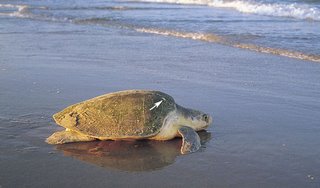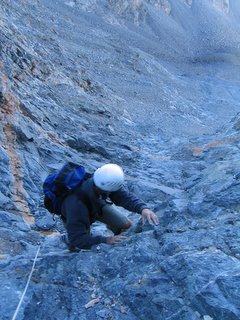
Jake Norton wasn't on Everest this spring. But this seasoned climber from Colorado watched from afar. And when reports surfaced of 40 people walking past a dying climber on their bids for the summit, Norton felt he had to write about it.
Norton has been on the mountain five times and has summited twice. Here's what he wrote in his newsletter:
"On the evening of May 14 and the morning of the 15th, David Sharp, a 34-year-old British climber, lay dying just below the First Step on the Northeast Ridge route. Reports indicate that roughly 40 people walked past him en route to and from the summit. No one stopped to lend the man a hand. No one was willing to sacrifice their summit, their dream, to help a fellow human being.
Perhaps there was no possibility of rescue. Perhaps David would have died regardless of assistance from other climbers. Either way, the actions on the mountain this spring beg the question: How much is the summit of Everest worth? Do mountainous goals legitimize the sacrifice of our humanity and compassion?
Having had the good fortune to stand on top of the world twice, I can say with certainty to anyone caught in a similar situation in the future: The summit is not worth the sacrifice of one's humanity. Yes, reaching the top is a wonderful experience. But, in the end, the summit is merely a small patch of snow sitting upon a big hunk of rock...and thus is not material for sacrificing humanity.
On the morning of May 7, 2001, my teammates John Race, Tap Richards and I had just begun our summit bids on what was my second expedition to the mountain. En route to Advanced Basecamp, we encountered Tibetan yak herders carrying two injured Chinese glaciologists down the mountain. Both men were suffering from advanced pulmonary and cerebral edema; if left unaided, they would soon die. Our decision was simple: We aborted our summit bid and began the arduous task of carrying two men down the Rongbuk Glacier. I blew out my knee in the rescue, ending my expedition with a resonant POP...but both Mr. Gao and Mr. Li lived to see their families again.
Three weeks later, my teammates were going for the summit via the NE Ridge. During the course of their summit bid, they ended up abandoning their summit hopes to rescue 5 people - 3 Siberians, one American, and one Guatemalan. The final rescue took place a mere 45 minutes from the top. Did they hesitate? Not a bit. Again, the tiny patch of snow lying at 29,035 feet is just that...a patch of snow. It will be there next year, and the year after that. And, in the end, standing on it does not change one's life. Reaching out to change the lives of others - no matter how short those lives may last - does.
In his famous book "Zen & The Art of Motorcycle Maintenance" Robert Pirsig writes:
"To live only for some future goal is shallow. It's the sides of the mountain which sustain life, not the top. Here's where things grow." I would add to Pirsig's observations that it is on the sides of the mountain where we grow, not on the top. And, there are times when that growth comes from sacrificing our own goals, dreams, and ambitions to reach out and assist others.
We must have goals in our lives, and we must aim for those goals, go after them with everything that we have and everything that we are. But, the important part of our goals is not reaching the end mark, crossing the finish line, but rather the experiences on the sides of our mountains. And, again, sometimes we must let go of Machiavellian ambitions, sacrificing our ambition so that we don't sacrifice our humanity, echoing the words of Martin Luther King, Jr.: "
There comes a time when one must take a position that is neither safe, not politic, nor popular, but one must take it because it is right."
Norton often writes about his climbing experiences and showcases his photographs on his Web site,
www.mountainworldphoto.com(In this photo, from the
American Foundation for International Mountaineering, Exploration and Research, Jake climbs the north face of Everest).













